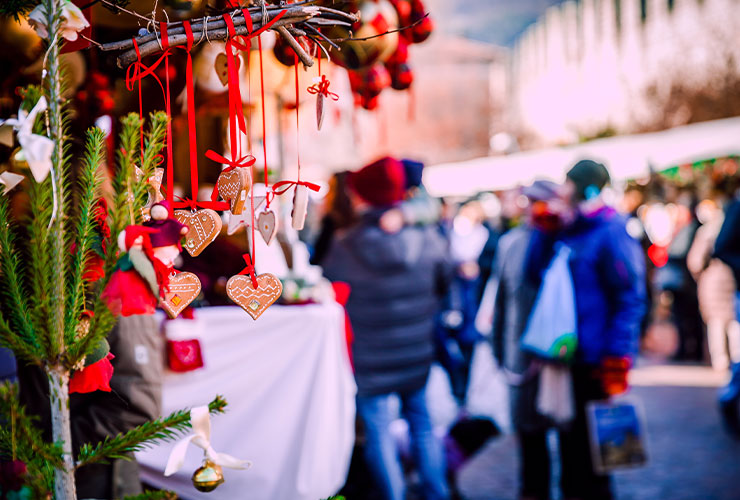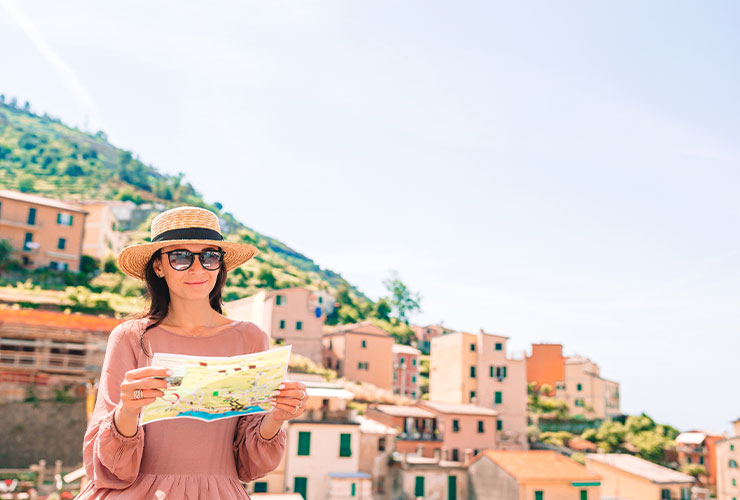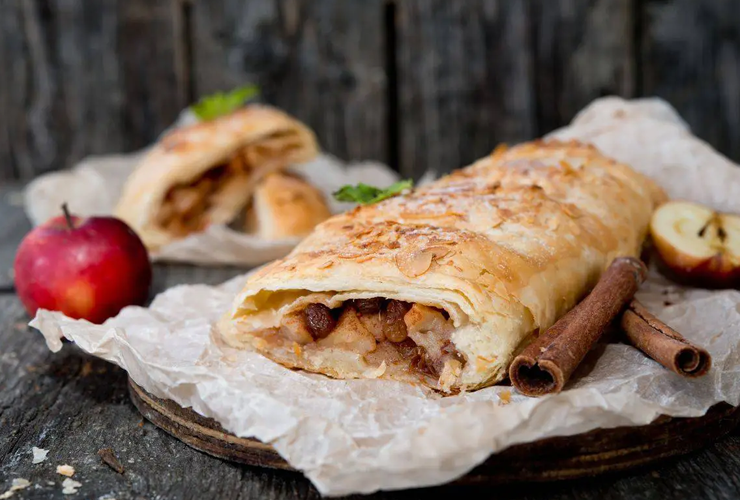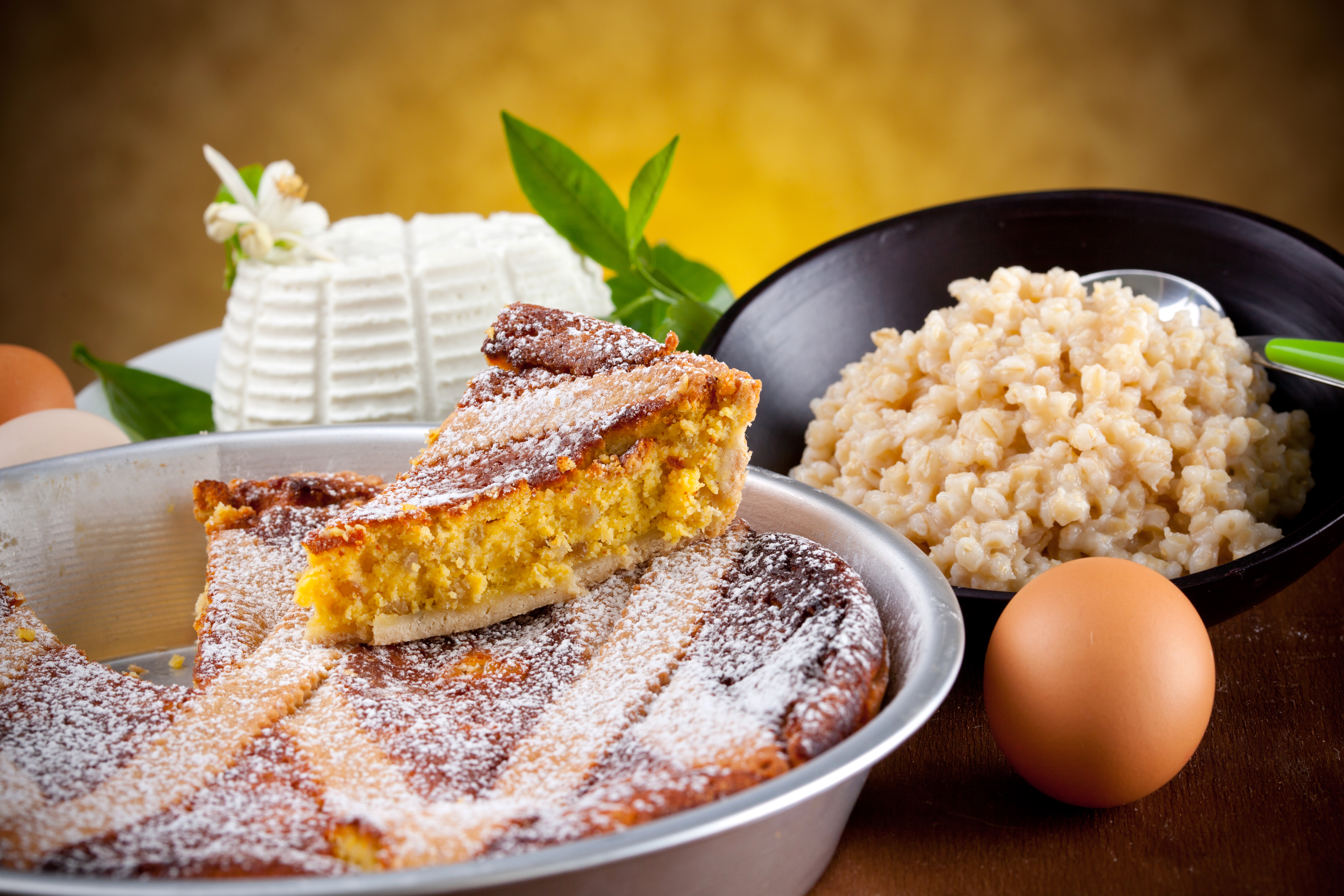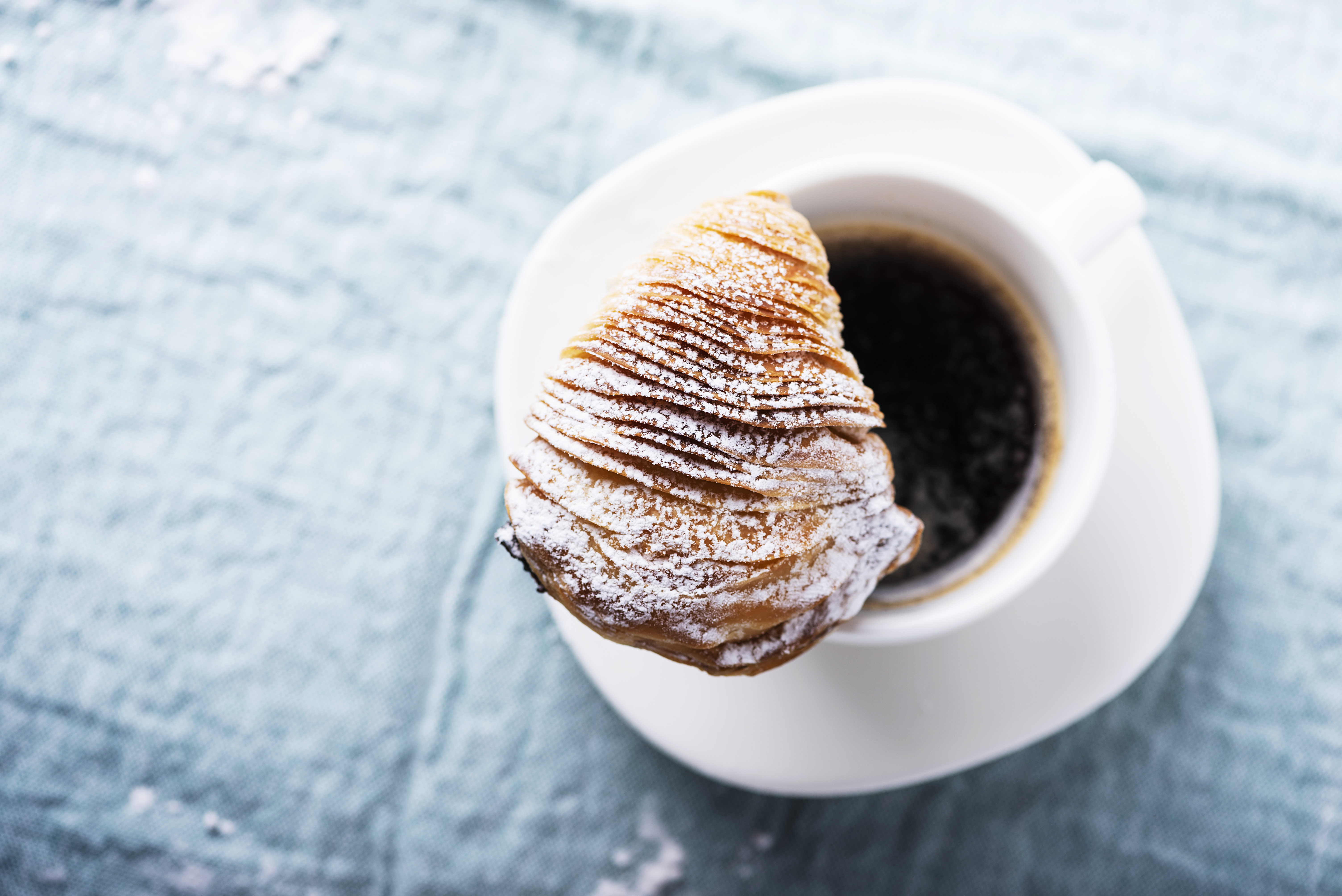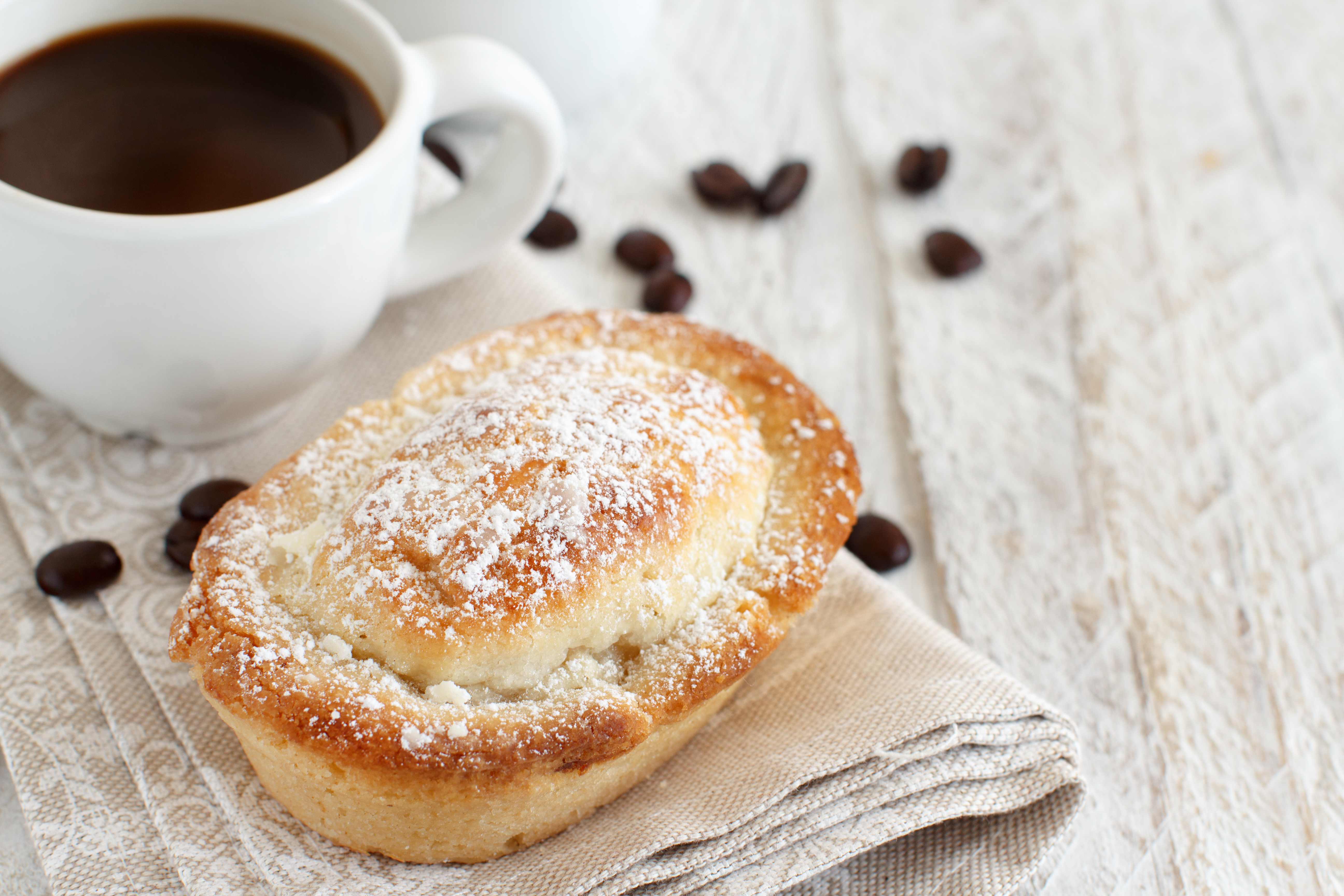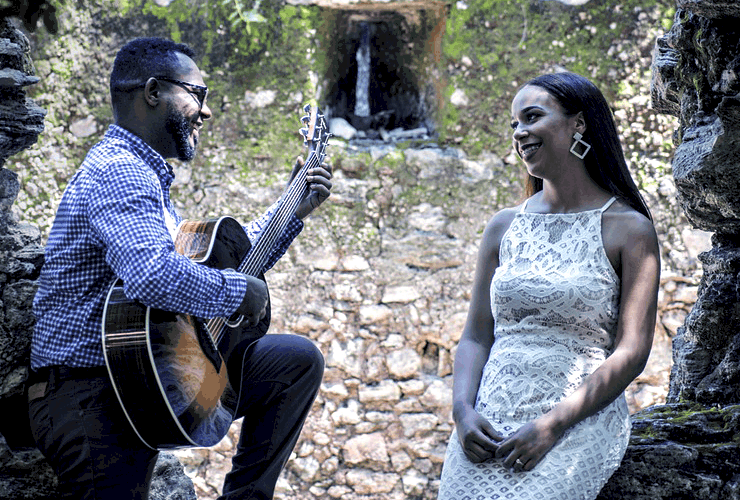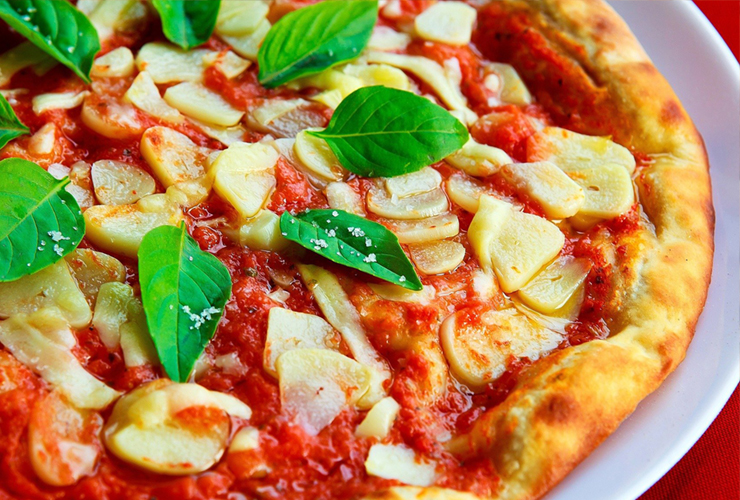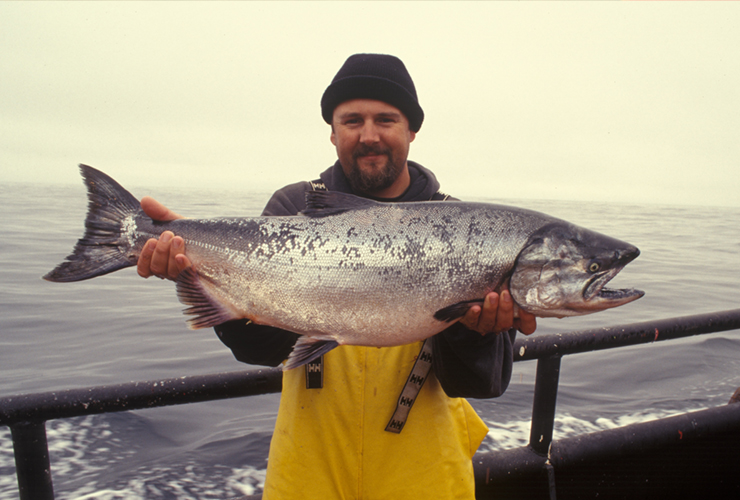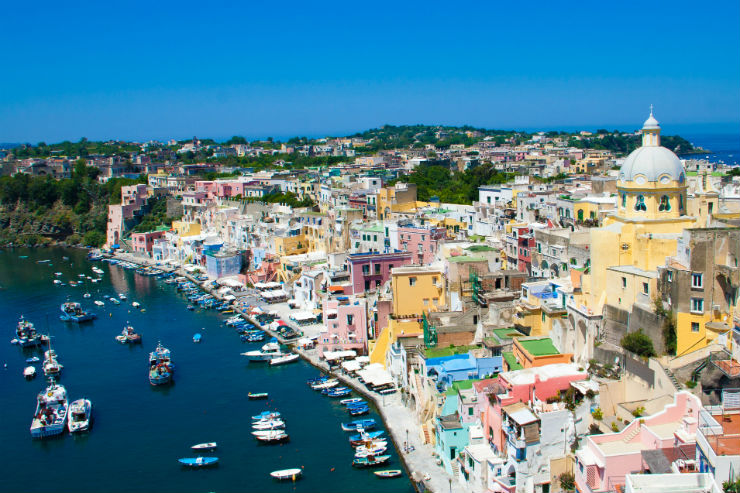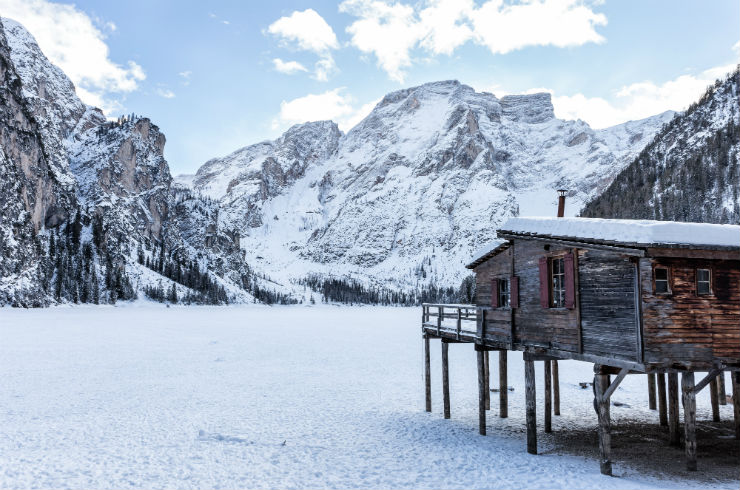The verb to go in Italian is one of the first verbs you want to learn, thanks to its versatility. In Italian we go everywhere, we don’t need to switch to verbs like to drive or to fly depending on the means of transportation as you do in English.
To go in Italian translates into andare.
But, that’s not only it. Before to see all the very important uses of andare let’s refresh the conjugation of the verb to go in Italian.
To go in Italian – Andare Conjugation
| io vado | I go |
| tu vai | you go |
| lui/lei va | he/she/it goes |
| noi andiamo | we go |
| voi andate | you go |
| loro vanno | they go |
As you can see from the chart, it is an irregular verb. Not completely though, since the subjects noi and voi act like regular verbs. Check the full conjugation of to go in Italian here.
Examples
Andiamo! – Let’s go!
Vado a fare la spesa – I go grocery shopping
Dove andate? – Where are you all going?
Uses of the verb to go in Italian

The Italian movement verb andare is versatile thanks to its multiple meanings and uses. As a result, it has literal and figurative senses, too.
Keeping in mind its conjugation, we’ll discover its most common meanings together!
To travel, to drive
The verb to go in Italian is used also as to travel or to drive when it means to proceed with a vehicle or to go somewhere to visit.
Examples:
Stai andando troppo veloce!
You’re driving too fast!
Se continui, andrai fuori strada.
If you keep going, you’ll drive off the road.
Per favore, vai a 50 km all’ora.
Please, travel at 50 km per hour.
Mi piacerebbe andare 500 anni indietro nel passato.
I’d like to travel 500 years back into the past.
Non dovresti andare in Messico.
You should not travel to Mexico.
To fit

In this case, go in Italian it’s used with the meaning of how something fits you. The thing that fits is the subject and the person is in the form of an indirect object pronoun (mi – to me, ti -to you, gli – to him, le – to her, ci – to us, vi – to you all, gli – to them).
Examples:
Questi pantaloni ti vanno bene?
Do these pants fit you?
Penso che la gonna non mi vada.
I think that the skirt won’t fit me.
To function, to work
As in the examples below when you say that something is, or is not, working, you can use andare.
Examples:
La televisione non va.
The television is not working.
Non vanno le lampadine.
The light bulbs aren’t working.
To go away, to leave
Examples
Devo andare.
I must go.
Vado via.
I go away.
To feel

We use go in Italianto ask and express how someone, or something, is doing.
Example:
Come va? Va tutto bene, e tu?
How do you do? All good, and you?
Come vanno le vacanze?
How is vacation going?
To get along, to agree
Further, if you want to say that you get along with someone, you’ll need to use to go in Italian in the expression andare d’accordo.
Examples:
Per fortuna, andiamo tutti d’accordo.
Luckily, we all get along.
Non vado d’accordo con il mio capo.
I don’t get along with my boss.
To be ok with, to feel like
Finally, you can use andare in the third person, singular and plural, when you talk about desires, wanting to do or have something. The subject, in this use, is the thing you do or do not feel like doing, and the person is in the form of an indirect object pronoun (mi, ti, gli, le, ci, vi, gli).
Examples:
Vi va un gelato?
Do you all feel like an ice cream?
Ti va bene?
Is it ok with you?
Mi va di guardare un film stasera.
I feel like watching a movie tonight.
Note that by adding the preposition DI before the infinitive of the verb, you are talking about actions you would like to do.
And these were the main uses of the verb to go in Italian.
One thing to remember is that we don’t use to go in Italian to talk about the future (I’m going to do something).
Vado in Italia domani
I’m going to Italy tomorrow
Prepositions to use with to go in Italian
Same as in English, the verb to go in Italian is followed by prepositions. Andare sometimes wants the preposition A, some others IN or DA but when and how to use them correctly? To use prepositions properly, it’s not an easy task in any language, and Italian is no exception. Below you will find the most common cases with andare and prepositions.
A with the verb to go in Italian
The verb to go in Italian is often followed by the preposition a. Let’s see together all the cases.
Andare a + città
Use this preposition with the name of cities (ex. Roma, Parigi, Londra, New York, etc.) with no articles.
Andiamo a Parigi per il nostro anniversario.
We go to Paris for our anniversary.
Andare a + places
Use a with some names of places in the city (ex. casa, letto, teatro, scuola, una festa, etc.) with no articles
Example:
Quando vado a teatro, vado sempre a letto tardi.
When I go to the theatre, I always go to bed late.
Andare a + meals
Use this preposition with names of the meals (colazione, pranzo, cena) with no articles
Example:
Dove andate di solito a colazione?
Where do you usually go for breakfast?
Andare a + infinitives

To go in Italian uses this preposition before the infinitive verbs that follow (ex. studiare, ballare, fare la spesa, giocare, correre, etc.) with no articles.
Example:
Giorgio e Marco vanno a studiare a casa, mentre io vado a fare la spesa.
Giorgio and Marco go home to study while I go grocery shopping.
Andare a piedi
A follows to go in Italian to indicate the action of walking (a piedi)
Example:
Vai a piedi a scuola?
Do you go by foot to school?
Andare a + cardinal directions
Use this preposition with cardinal directions (sud, nord, est, ovest)
Example:
Lucia va a sud della città per correre.
Lucia goes to the south of the city to run.
Andare al + specific places
Use al (a + il = al) and other articulate preposition with some names of places, events and geographical names (ex. cinema, ristorante, bar, matrimonio, ricevimento, congresso, mare, lago, etc.)
Examples:
Possiamo andare al mare?
Can we go to the beach?
Domani vado al matrimoniodella mia migliore amica.
Tomorrow I’ll go to my best friend’s wedding.
IN with the verb to go in Italian

In follows to go in Italian in the situations below.
Andare in + nations, regions, continents
Use this preposition with names of nations, regions and continents (ex. Italia, Spagna, Costa Azzurra, Asia, etc.) with no articles.
Per il mio compleanno andiamo in Franciae in Belgio.
For my birthday we go to France and Belgium.
Andare negli + plural names of nations
Use this preposition with definite articles (aka preposizione articolata – in + def. art.) when used with nations or regions names in the plural (ex. gli Stati Uniti, gli Emirati Arabi, etc.)
Example
Marco va negli Stati Uniti da solo.
Marco goes to the United States by himself.
Andare in + means of transportation
Use this preposition to indicate the means of transport (ex. autobus, macchina, treno, etc.) with no articles
Example
Mio figlio va a scuola in autobus tutti i giorni.
My son goes to school by bus every day.
Andare in + places in town

Use IN with to go in Italian followed by some places in the cities, like shops and also places ending in -IA (ex. città, centro, ufficio, banca, piscina, giardino, farmacia, libreria, birreria, etc.) with no articles.
Example
Stasera andiamo in centro in pizzeria e dopo andiamo in birreria.
Tonight, we’ll go downtown to a pizza place and after that we’ll go to a brewery.
Andare in vacanza
Quest’anno Andrea va in vacanza in montagna.
This year Andrea goes on vacation in the mountains.
Andare in pensione
To go in Italian is also used to say to retire.
Mio padre va in pensione domani.
My father will retire tomorrow.
Da with to go in Italian

Andare + DA
Use this preposition to indicate the person where someone goes or stays (ex. un amico, il dottore, Maria, etc.) with or without articles depending on the person (ex. with personal names no articles, articles with names of professions)
Papà, oggi vado da Luca, la mamma va dal dottore e tu vai dal parrucchiere, va bene?
Dad, today I’ll go to Luca’s, mum will go to the doctor and you’ll go to the hairdresser, ok?
Expressions with to go in Italian
Let’s conclude with some very useful expressions you may use and hear with to go in Italian.
Andare a genio
It doesn’t mean to go to the genius or genie, as it may sound like, but to have the desire or to like.
Example
Non mi va a genio
It doesn’t appeal to me
Andare a monte and Andare in fumo
We use to go in Italian in these expressions to say that something went wrong.
Examples
Il piano è andato a monte
The plan blew up
Tutto andrà in fumo
Everything will go up in smoke
Andare a ruba

This expression means to fly off the shelf.
Example
La nutella va sempre a ruba
Nutella flies always off the shelf
Andare a letto con i polli
To go to bed with chickens means to go to bed early.
Example
Tu vai a dormire a letto con i polli
You go to sleep so early
Andare a gonfie vele
To go in Italian is used also to say that something is going very well. Same as to be on a roll.
Example
Il lavoro sta andando a gonfie vele
Work is going very well
Andare alla grande

Same as the expression above.
Example
Come vanno le cose? Va tutto alla grande!
How are things going? Everything goes perfectly!
Andare di matto
Example
Sto andando di matto!
I am getting crazy!
Andare di moda
The verb to go in Italian followed by di moda means to be a trend.
Example
I jeans sono sempre di moda
Jeans are always a trend
Andare di corpo
Sorry about this one, it means to move the bowels. But the finer way to say to go to the bathroom is andare in bagno.
Andare di + infinitive
Example
Ti va di andare al parco?
Would you like to go to the park?
Congratulations! You made it through this very long guide of andare, and its main uses! Now, you just need to andare a praticare (go practice)!




